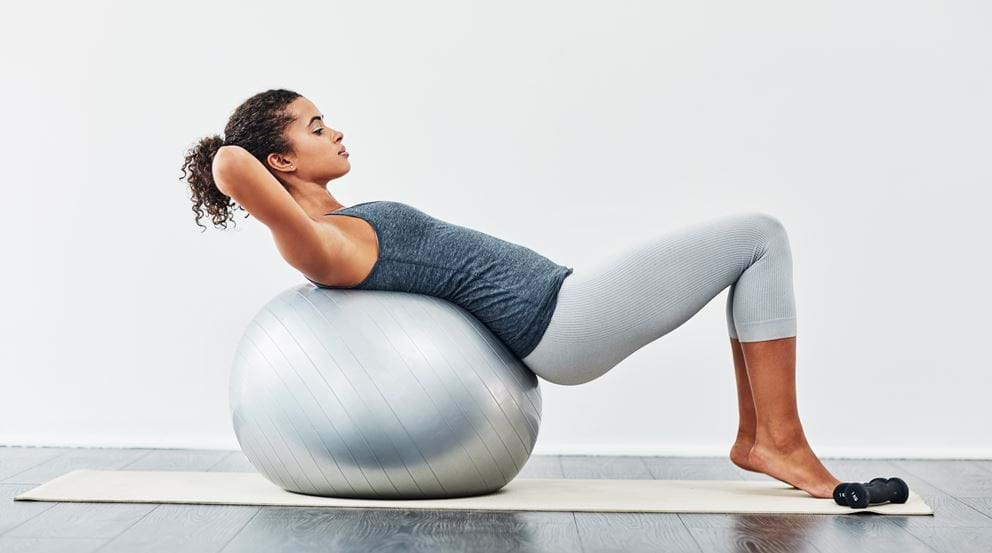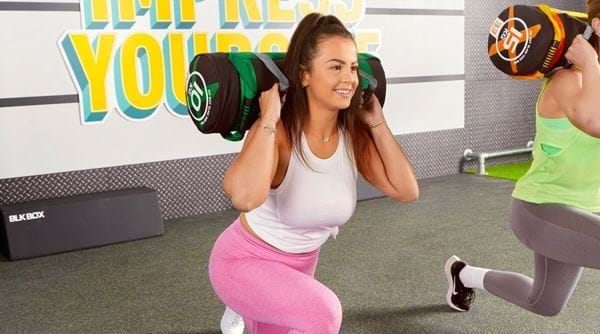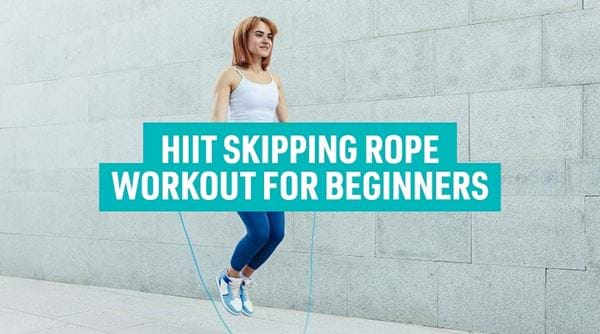Bounce & Balance: Get Fit & Have Fun With Yoga Ball Exercises

What Is A Yoga Ball? | What Are Yoga Balls Used For? | Can A Yoga Ball Pop? | Deflating A Yoga Ball | 6 Yoga Ball Exercises
Looking for a fun, challenging way to engage your muscles, improve your stability, and strengthen your core? It could be time to embrace the yoga ball and bounce and roll your way through your next workout.
Discover more about yoga balls, how they work, and some of our favourite yoga ball exercises with this guide.
What Is A Yoga Ball?
A yoga ball, also known as an exercise ball, stability ball, or Swiss ball, is a large inflatable ball made of elastic PVC material - if you’re a gym member, then you’ll very likely have seen one of these in the functional training or stretch area. Yoga balls are typically around 55-75 centimetres (22-30 inches) in diameter, with the various sizes used to accommodate different body heights.
There are many different types of exercise balls used in the gym, including medicine balls (weighted), bosu (half ball), slam balls and wall balls. Most of these are smaller and heavier than a regular yoga ball, which is larger, bouncy, and easy to lift and move.
What Is A Yoga Ball Used For?
Yoga balls are commonly used in yoga, Pilates, physical therapy, and general fitness workouts. They’re also popular during pregnancy. Some of the main uses include:
-
Core strengthening: The unstable surface of the yoga ball engages your core muscles, as they work to maintain balance and stability during exercise, helping to strengthen the muscles in your abdomen, lower back, and hips.
-
Balance and stability training: Sitting or leaning on a yoga ball activates the stabilising muscles in your body - this can help to improve your balance, coordination, and spatial awareness.
-
Posture improvement: Using a yoga ball as a chair can promote better posture by engaging your core muscles and encouraging proper alignment of the spine. Sitting on the ball requires an active and upright posture, which can help counteract the negative effects of prolonged sitting.
-
Flexibility and stretching: Yoga balls can be used during stretching exercises to target specific areas, provide support and assistance and improve flexibility in a wide range of muscle groups.
-
Rehabilitation and physical therapy: Yoga balls are commonly used in physical therapy settings to help with injury recovery and rehabilitation while minimising impact on the joints.
-
Yoga and Pilates: You’ll often find yoga balls used in yoga and Pilates classes to add variety, challenge stability, and deepen poses. They can be used to support certain movements, provide resistance or to add an extra element of balance.
-
Functional fitness training: Functional exercises that mimic everyday movements can be performed using a yoga ball. This helps enhance overall strength, stability, and coordination, improving performance in daily activities or sports.
Yoga balls aren’t just for exercise - many people, particularly those going through pregnancy, use a yoga ball as a chair. They’re perfect for sitting on when you’re working at your desk or sitting watching TV. Doing this can help to engage your muscles throughout the day, encourage better balance and stability, and can help to reduce back pain.
Bouncing on a yoga ball is also a great way to boost your NEAT activity throughout the day - it’s a form of active sitting that means you’ll be burning calories and working your core even when you’re ‘relaxing’.
Can A Yoga Ball Pop?
While it’s rare, a yoga ball can potentially pop or burst if subjected to excessive weight, sharp objects, or rough surfaces. To avoid the risk of popping, use the ball on a clean, smooth surface and avoid placing it near sharp objects. You should also check to make sure you’re using the right size and type of yoga ball for your weight and intended use, and avoid over-inflating as this makes yoga balls more prone to bursting.
How To Deflate A Yoga Ball:
To deflate a yoga ball, follow these steps:
-
Find the air valve on the ball - this is typically a small plastic plug near the ball's inflation point.
-
Insert a valve remover tool or a small object like a pen or paper clip into the valve to depress the pin inside.
-
Gently lean or press down on the ball to slowly release the air.
-
Once the ball is deflated, remove the valve completely to let all the air out.
-
Carefully fold or roll the deflated ball for storage or transportation.
6 Of The Best Yoga Ball Exercises
Yoga balls can be used to add an extra challenge to many exercises to increase core engagement and force the stabilising muscles to work harder to maintain balance.
Some of the best exercises to try yoga ball variations include:
-
Ball Squats
Stand with the ball against a sturdy wall, position it at lower back level and lean against it, sandwiching the ball between your back and the wall. Slowly squat down by bending your knees and hips as if you’re sitting back into a chair. Make sure to keep your knees aligned with your toes and your core engaged. Return to the starting position by pushing through your heels until you’re standing straight again.
You can make this even more challenging by practicing yoga ball pistol squats.
-
Stability Ball Bridge
Lie on your back with your knees bent and your feet flat against the ball. Keeping your core engaged so you maintain balance throughout, carefully lift your hips off the ground, creating a straight line from your shoulders to your knees. Hold for a moment or two and then slowly lower back down.
-
Yoga Ball Plank Rollouts
Start in a plank position with your forearms positioned on the ball. Keeping your core engaged, start to slowly roll the ball forward by extending your arms and allowing the ball to move away from your body. You need to focus on maintaining a straight body alignment, making sure not to let your lower back sag. Roll out until you feel a stretch in your core, then carefully roll the ball back towards you by bending your arms again.
Find this exercise too hard? Start off with Swiss ball plank circles instead.
-
Stability Ball Russian Twist
Sit on the ball and walk your feet forward, letting the ball roll along your body until your upper back is resting on top. Holding your hands in front of your chest, twist your torso from side to side while keeping your core engaged. You’ll be aiming to touch the ball or the ground beside the ball with your hands. Continue alternating sides, focusing on keeping your core engaged and your balance maintained.
-
Assume a push-up position with your feet on the ball and arms extended around shoulder width apart. Engage your core and start to lift your hips upward, rolling the ball toward your chest until your body forms an inverted V-shape. Hold for a moment before returning to the starting position.
-
Superman Back Extension
Lie with your belly on the ball, walking your feet and hands away from your body as far as they’ll go. Lift your arms and legs off the ball simultaneously, squeezing your glutes and engaging your lower back muscles. Hold for a few sections before slowly lowering back to starting position.
Whether you're just starting out at the gym, or are a seasoned pro, there's always room to learn more. Check out our other fitness tips and advice blogs to improve your skills and make sure you're on the right track. If you’re ready to sign up, you can find a PureGym near you and become a member today.


